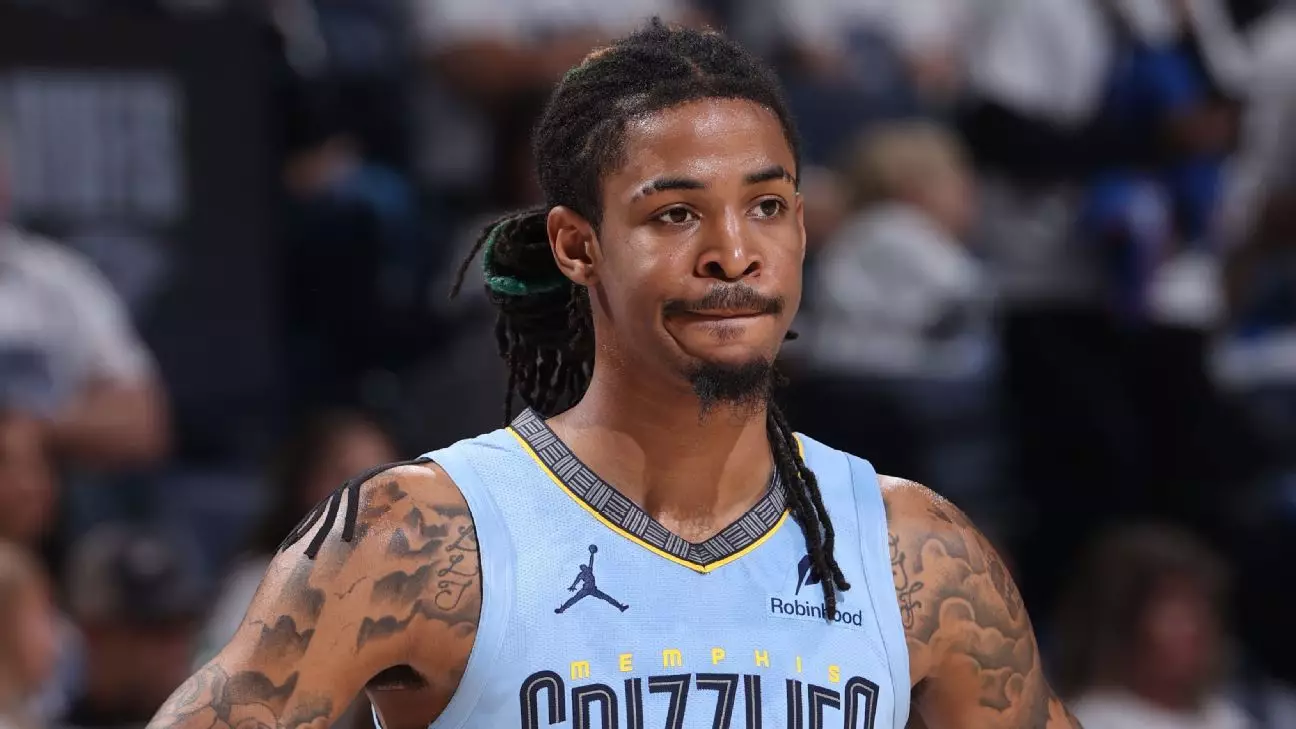The Power of Leadership: Lessons from the Ja Morant Incident
In the ever-evolving world of sports, athletes often find themselves thrust into the role of mentors and leaders, whether they are ready for it or not. Recently, an incident involving NBA star Ja Morant has brought to light the delicate balance between athletic prowess and personal responsibility. This episode, stemming from a pickup basketball game, offers a poignant example of how leadership can manifest in unexpected ways. It serves as a powerful reminder that every action carries potential lessons and consequences.
As someone who loves sports, you might find yourself reflecting on how athletes like Morant navigate their roles both on and off the court. The incident with high school player Joshua Holloway offers a window into the challenges faced by those in the public eye. It’s not just about what happens during a game but how these moments can become pivotal teaching experiences. As we dive deeper into this story, we’ll explore what it reveals about leadership, responsibility, and the impact of public figures.
This story is more than just a narrative about a confrontation; it’s an opportunity to dissect themes of self-defense, maturity, and emotional intelligence. Each of these elements plays a crucial role in shaping how athletes are perceived by others and how they perceive themselves. As you read on, consider how these lessons might apply to your own life, whether you’re on the court or navigating your day-to-day interactions.
Key Takeaways
- Athletes have significant influence as role models beyond their sports performance.
- Legal interpretations in sports incidents can be complex and nuanced.
- Emotional intelligence is critical both in sports and personal growth.
Self-Defense and Legal Precedents in Sports
The concept of self-defense in sports settings often straddles a fine line between justified protection and unnecessary aggression. In Ja Morant’s case, his legal team argued under Tennessee’s “stand your ground” law that he was acting in self-defense. This interpretation invites us to examine the parameters within which athletes operate when emotions run high. Such legal protections raise important questions about the boundaries of self-defense in competitive environments where physicality is part of the game.
The decision by Judge Carol Chumney to dismiss the lawsuit against Morant emphasized the importance of context in legal matters. Witness testimonies played a crucial role in understanding whether Morant’s actions were defensive or aggressive. Former NBA player Mike Miller’s account suggested that Holloway’s actions were provocative, adding layers to the incident’s complexity. This highlights how perspective can significantly influence legal outcomes and underscores the importance of comprehensive analysis in such cases.

Role Models and the Influence of Public Figures
Athletes like Ja Morant and Joshua Holloway hold influential positions within their respective communities. Their actions reverberate far beyond the confines of a court or field. As leaders, they have a unique opportunity to inspire young athletes through both their successes and failures. This incident reminds us that being a public figure involves navigating responsibilities that impact others profoundly. It’s not just about achieving greatness but also about setting an example for future generations.
Judge Chumney’s remarks highlighted this dual role that athletes play—as performers and as mentors. The incident serves as a cautionary tale about how quickly public perception can shift based on one’s behavior. For athletes, maintaining composure during conflicts is essential not only for their own careers but also for maintaining their status as role models. This case underscores the necessity for thoughtful conflict resolution as an integral part of professional life.

Emotional Intelligence on and off the Court
Navigating conflicts with emotional intelligence is an invaluable skill for anyone, particularly those under constant scrutiny like athletes. The altercation between Morant and Holloway emphasizes how crucial it is to manage emotions effectively, especially when stakes are high. Athletes must learn to respond thoughtfully rather than react impulsively—a skill that benefits them personally and professionally. This kind of emotional maturity becomes essential as they continue to grow both in their careers and personal lives.
Reflecting on such incidents allows athletes to focus on personal development and resilience. By learning from past experiences, both Morant and Holloway have the chance to foster positive change within their communities. Instead of letting a single moment define them negatively, they can use it as a stepping stone towards greater maturity and leadership capabilities. Their journeys provide insights into how emotional intelligence can transform conflicts into opportunities for growth.
Final Thoughts
The Ja Morant incident offers valuable insights into leadership dynamics within sports culture. It highlights that leadership extends far beyond physical abilities—it encompasses every decision made under pressure and each interaction with others. Athletes have immense potential to influence those around them positively by embracing their roles responsibly. As you reflect on this story, consider how similar principles can enhance your own approach to leadership in various aspects of life.
This narrative encourages us all to examine our responses to conflict—whether on the court or elsewhere—and strive for outcomes rooted in understanding rather than confrontation. Ultimately, it’s about using experiences as catalysts for improvement rather than letting them hinder progress. Through conscious effort towards personal growth, we can all aspire to lead with integrity, compassion, and wisdom.
Ja Morant
Leadership Lessons
Sports Responsibility
Emotional Intelligence


Leave a Reply